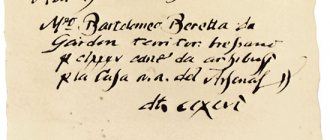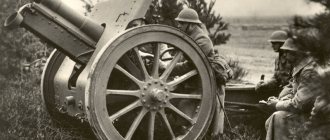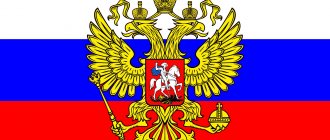As one of the official symbols of the Russian Federation, the modern coat of arms has an interesting history of formation and various changes. The history of this sign, the meaning of the elements depicted on it, and its color scheme are still controversial among heraldry researchers. This material contains detailed information of interest to all people interested in issues of domestic heraldry, and simply to those who are curious about the history of the appearance of this state emblem of modern Russia.
Appearance
In the 21st century, the official symbol of the Russian Federation looks like this:
- On a bright red French shield there is a double-headed burial eagle with raised wings.
- Above the bird's heads are three gold crowns, united by a gold ribbon: two small ones and an even larger one.
- The bird has an orb in its left paw and a scepter in its right.
- On the eagle's chest is a French red shield with a horseman piercing a black dragon through and through with a sharp spear.
- The warrior-rider is draped in a dark blue cloak. The horseman is white and silver, the spear and the horse too.
Philosophical influence
Prince John always attracted Western specialists engaged by Russian emissaries for various buildings. We are well aware of the Italian architect Fioravanti, who had a hand in the creation of the Assumption Cathedral. Solari erected several towers of the then Kremlin. But almost all outstanding personalities of that time were members of secret societies. And many of them used the symbolism of the double-headed eagle. It cannot be ruled out that the Prince of Moscow borrowed this image from the architects, or that he himself was a member of a secret society.
In addition, the symbol of a two-headed bird was then used by novice alchemists. For them, he was the personification of the philosopher's stone, which many scientists unsuccessfully tried to create. Numerous foreign specialists entered John's court. There were many doctors and pharmacists who were fanatically interested in searching for the stone. Perhaps it was this symbol of magic that the Moscow Tsar decided to attract to himself. It should be noted that in the 15th century the double-headed eagle was considered a fashionable symbol in the countries of the Old World. It is likely that the king simply decided to follow fashion trends.
Time of origin of the main elements of the coat of arms
The use of a burial eagle with two heads as a state sign was recorded for the first time during the time of Prince Ivan III, who married the Greek princess Sophia Paleologus and formally received the rights to this state sign of the last emperors of Byzantium. The coat of arms did not exist at that time: it was actually replaced by the state seal of the prince. On its front side was St. George the Victorious on horseback (rider), on the back - the imperial eagle. An imprint of this seal is on the exchange document of 1497. This is the first document discovered by historians that contains this sign.
The horseman became the emblem of the Moscow principality, replacing the lion tormenting a snake and the unicorn, which at different times were the emblems of the Moscow princes. The figure of the “rider” (that is, the horseman) was transformed into the image of St. George through various changes: the horseman was without a spear or with a hunting sword or falcon and embodied the image of the ruling prince, sometimes killing the serpent, and sometimes without it.
Under Yuri Dolgoruky, Saint George began to be depicted in the form familiar to us, becoming a symbol of Moscow. And as a result of the unification of lands under the rule of Moscow, St. George the Victorious became a symbol of the state as a whole, along with the eagle.
Byzantium
In the 4th century AD, or more precisely in 395, a new state was formed - the Byzantine Empire. This happened after the division of the Roman Empire into eastern and western parts. The capital of the new state was the city of Constantinople. The new state began to develop rapidly, reaching its peak under Emperor Justinian.
Trade flourished in Byzantium, as this was facilitated by its favorable geographical location, and the legal system was also improved. But gradually the situation began to change in the opposite direction. Regular wars weakened the empire; in 1204, the capital Constantinople was captured, and Byzantium itself split into several states. But in 1261 the empire was restored. Since the 14th century, there have been constant skirmishes with the Ottomans. Over time, nothing remained of the large possessions of Byzantium, and in 1453 the Ottomans captured Constantinople, and the Byzantine Empire ceased to exist.
History of changes to the coat of arms
The formidable eagle has changed significantly over many decades, starting from the 15th century, turning from a schematic image into a well-drawn image with many symbolic details.
In Tsarist times
- During the reign of Ivan III, the bird's beak was closed, and it looked like a fragile chick, and not an adult. Researchers see this as a symbol of a young, centralized state united under the rule of Moscow.
- Under Vasily III, the bird's beak was already open and long tongues protruded from it. This image showed the growing power of the state and the ability to defend its interests. The power bird has become more aggressive and angry over the years.
- During the accession of Ivan the Terrible, a shield with St. George the Victorious (reverse side) appeared on the eagle’s chest on the seal, and a unicorn occupied the front side. The imperial eagle was crowned with one royal crown. An eight-pointed golden cross shone above him. The Orthodox cross and Saint George emphasized the rooting of Orthodoxy in Rus'.
- Above the heads of the eagles under Theodore the Blessed there was a pair of crowns, one above each, and between their heads there was a Calvary cross, a sign of the Passion of Christ. During this period, Russia gained church independence, and the patriarchate was established, which is perhaps symbolically reflected in the country’s emblem.
- During the reign of False Dmitry, three crowns appeared above the eagle, and the figure of St. George the Victorious was turned to the right side of the heraldic shield (before that, the rider galloped to the left). True, after his overthrow everything remained as before.
- During the reign of Mikhail Romanov, the image of three crowns without a cross was finally established, which were perceived as a sign of the Holy Trinity. Sometimes these royal crowns are interpreted as an alliance of Slavs: Great Russians, Belarusians, Little Russians. The eagle spread its powerful wings, demonstrating the indestructibility and strength of the country.
- The power and the scepter ended up in the eagle’s claws under Tsar Alexei the Quiet, and it acquired the familiar appearance for us: the wings are open, raised up, there are three crowns above the heads of the eagle, and a shield with St. Georgiy. Three crowns here are a sign of the principalities of Kazan, Siberian and Astrakhan.
In the era of empire
- During Peter's reign, the symbol of the country changed most significantly: the royal crowns were replaced with imperial crowns entwined with St. Andrew's ribbon. The body color of the emblem bird turned from golden to black, but its paws, beaks, and eyes remained golden. The shields of the Great Duchies, three on each, were freely placed on the wide wings. Another chain of St. Andrew the First-Called and Archangels Michael and Gabriel. The eagle has become the personification of the undividedness of the European and Asian territories of the huge country.
- Peter's wife, Catherine I, officially approved the color palette: a black bird on a golden background, on its chest - a red shield with a rider.
- Under Empresses Elizaveta Petrovna and Catherine the Great, no significant changes were observed, only, as researchers note, the bird began to strongly resemble an eagle.
- Under Paul I, a Maltese cross with a crown appeared, placed under a shield with St. Georgiy.
- Under Emperor Alexander I, the Maltese cross with a crown was removed, as was the orb with a scepter. Instead, in the bird’s claws there were arrows (peruns), a torch, a staff (in the right), a laurel wreath (in the left) and intertwined ribbons - signs of victory in the Patriotic War of 1812. The eagle’s wings spread out as wide as possible, with the feathers down. It is curious that one of the eagle heads is tilted downwards more than the neighboring one. The eagle had one crown during this period.
- Under Nicholas I, the eagle acquired an aggressive appearance: the bird’s heads are powerful and menacing, its wings are raised extremely high.
Under Alexander II
A golden outline appeared around the shield with George, and the direction of movement of the rider changed: he turned to the right side of the heraldic shield. A set of coats of arms was developed at the same time.
The large coat of arms looked like this: a golden shield, with the same black eagle with three crowns, an orb and a scepter, and also with the coat of arms of Moscow. Above the Moscow emblem is the helmet of Alexander Nevsky, and on its sides are the Archangels Gabriel and Michael. On the shield hangs a chain with the Order of the Apostle Andrew. All this is crowned with a golden crown and above that - a banner. Around this emblem there are shields - six territorial and another nine principalities and kingdoms.
All the coats of arms of Alexander II operated successfully on the territory of the empire until 1917.
In the post-revolutionary period
The black burial eagle survived after the February events of 1917 partly because it lost its crowns, its rider, and its scepter and orb. And soon this symbol of tsarism was abolished and was replaced by the coat of arms of the USSR.
The Soviet coat of arms was in effect until perestroika and the collapse of the Soviet Union. It was replaced by the modern Russian emblem.
The restoration of the coat of arms in the fall of 1993 was intended to emphasize the integrity, continuity of national history, as well as its continuity.
What did the coat of arms of the Russian Empire mean under Peter I?
After coming to power, the first Russian emperor decided that the double-headed eagle should not just decorate certain official papers, but also become a full-fledged symbol of the country. He decided that the bird should become black, like the one that was on the banners of the Holy Roman Empire, of which Byzantium was the heir.
On the wings were painted the signs of local large principalities and kingdoms that were part of the country. For example, Kyiv, Novgorod, Kazan. One head looked to the West, the other to the East. The headdress was a large imperial crown, which replaced the royal one and hinted at the specifics of the established power. Russia asserted its independence and freedom of rights. Peter I chose this type of crown several years before he proclaimed the country an Empire and himself emperor.
The Order of St. Andrew the First-Called appeared on the bird's chest.
Until Nicholas I, the official emblem of the country retained the form established by Peter I, undergoing only minor changes.
The meaning of the coat of arms
The country's emblem was recreated by St. Petersburg artist Evgeny Ilyich Ukhnalev.
The Great Coat of Arms has significant differences with the modern symbol:
- the eagle's beak is opened wider on the royal coat of arms;
- in the modern interpretation there are neither the coats of arms of the principalities, nor the chain of the Apostle Andrew the First-Called;
- the horseman is turned in the modern version to the right in relation to the person looking at the image, in the imperial version - in the other direction;
- The color palette of the imperial coat of arms is black and gold, the modern one is red and gold.
The modern appearance of the coat of arms of the Russian Federation is close to the coat of arms of tsarist times with the attributes of that era, but the symbolism of its elements has been rethought and began to have a different meaning:
- The double-headed eagle, being originally a symbol of the state that succeeded Byzantium, in our time simply emphasizes the power and strength of the state, the transcontinental nature of the country, partly located in Europe, partly in Asia. The bird's feathers are now arranged in three rows, which is interpreted by such concepts as goodness, truth and beauty.
- The three crowns represent levels of government or branches of government. The crowns of Peter the Great are now a symbol of Russian sovereignty. At first it was a sign of the Holy Trinity, and later it denoted the three kingdoms.
- The modern version of the power represents the integrity, unity of the state and its power. The scepter became the personification of the state sovereignty of the country, its political independence. Initially, these items were simply attributes of royal (imperial) power.
- The figure of a horseman slaying a dragon has retained its historical significance. This image symbolically shows the victory of good over evil, and the horseman - St. George the Victorious - appears here as the defender of the Fatherland. The shield also traditionally represents protection.
- The black dragon becomes the personification of difficult trials in the fate of the country, and it is also a sign of grief for the innocent dead.
In general, the symbolism of the coat of arms of the Russian Federation today denotes state power and the unity of the country.
Color scheme, color symbolism
The color palette of the coat of arms is also deeply symbolic:
- The golden color of the eagle, returned to him in 2000, in heraldry is the personification of power, wealth, as well as mercy and justice of the Orthodox Church.
- The red color, which predominates on the coat of arms and is its background, is considered a symbol of courage and love for the homeland. At the same time, it is also a symbol of the shed blood of the defenders of the Fatherland, as well as the unity of a multinational state.
- The color silver in heraldry is a sign of nobility, purity of thoughts and intentions, the personification of a fair struggle for the truth. This is the color of the rider’s armor, the same color of the spear and horse on the shield.
- The dragon on the shield is painted black, and this shade symbolically embodies grief for those who died and innocently killed throughout the entire dramatic history of the country, and their memory.
According to Russian legislation, it is permissible to depict the country’s emblem in black and white, one-color.
The country's coat of arms is intended to spiritually unite all citizens living on the territory of Russia, emphasizing the unity of peoples peacefully coexisting on the territory of one state. This national symbol is present on all official documents, including the Russian passport, and on all government buildings of the country, coins, medals and orders, being an integral attribute of the Russian state.











